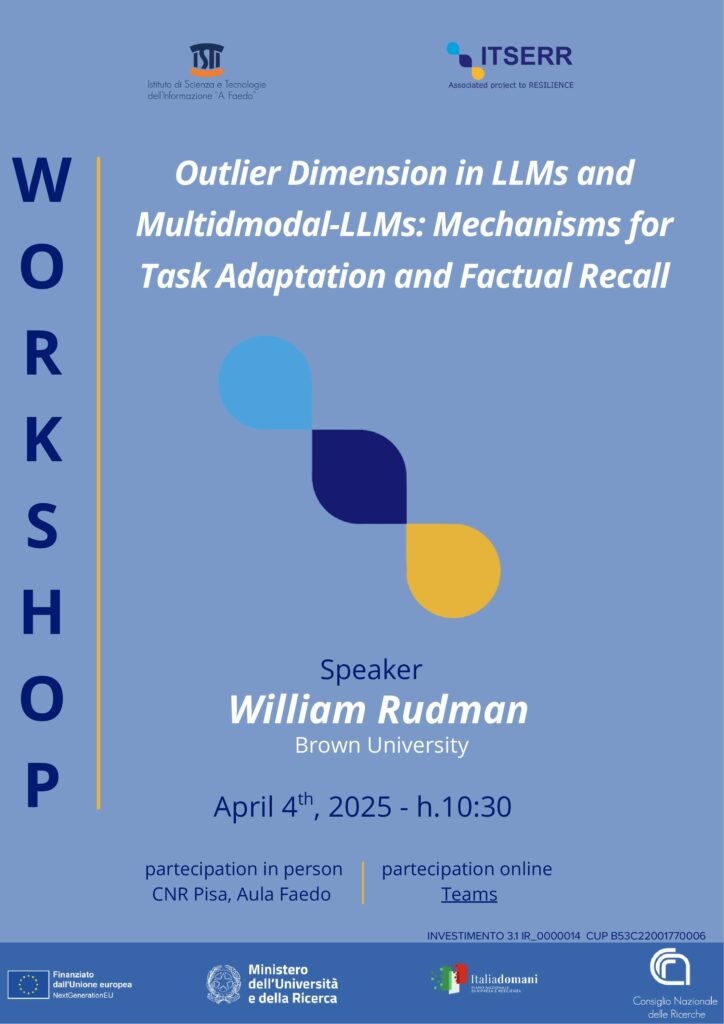6° ITSERR TRAINING IN-HOUSE
STATE OF THE ART OF THE ITSERR PROJECT AND TRAINING ON MANUSCRIPT CATALOGUES WITHIN THE DIGITAL HUMANITIES, AUTOMATED METHODS FOR CATALOGUING, NLP FOR LATIN AND ISSUES ON CODIFICATION OF MATERIAL CULTURE
Two Days of Training and Discussion at the ISTI – CNR in Pisa for the ITSERR Project
The PNRR ITSERR project (Italian Strengthening of the European Research Infrastructure for Religious Studies) is organizing its sixth in-house training meeting, scheduled for April 10–11, 2025, at the “A. Faedo” Institute of Information Science and Technologies (ISTI -CNR) in Pisa.
The event will include two days of discussion on the progress of the project and training sessions focused on the intersection of digital humanities, computational linguistics, and technologies for the enhancement of cultural and religious heritage.
The program alternates between updates on the various Work Packages and training sessions led by scholars from prestigious international institutions. These sessions will provide specialized insights and innovative perspectives on key topics of the project, including the automated cataloguing of manuscripts, Natural Language Processing for Latin, digital methodologies for the analysis and conversion of cataloguing data, and the challenges of codifying material culture and religious practices, also from an anthropological perspective. This training represents a key milestone in the development of the ITSERR project, which aims to strengthen the European research infrastructure for religious studies through the adoption of innovative tools and transnational access to digital resources in support of religious studies and the digital humanities
